- Beranda
- Komunitas
- Entertainment
- The Lounge
Kisah ilmuwaan yang Mati Akibat Karyanya Sendiri
TS
hanifaiz
Kisah ilmuwaan yang Mati Akibat Karyanya Sendiri
bukti no repsol gan

Jangan rupa rate dulu yah
pejwan nih

Spoiler for :

Jangan rupa rate dulu yah

Quote:
INTERMEZO DULU GAN
Ilmuwan yang mati akibat karya sendiri ? hhmm miris yah gan. tapi itulah resiko dari pekerjaan kita. semua pekerjaan punya sisi positif dan negatif yang harus kita terima. nahh tergantung ke diri kita nih gimana cara nge maksimalin hasil positifnya dan meminimalisir resiko kecelakaan. tapi yang namanya takdir siapa sih yang bisa mengelak. termasuk takdir kapan kita meninggal. yang penting kita pernah usaha buat mencegah resiko kecelakaan itu gan. tentang mati ya diserahin ke yang punya hidup aja dah. Oke silahkan menikmati trit sederhana ane gan
Ilmuwan yang mati akibat karya sendiri ? hhmm miris yah gan. tapi itulah resiko dari pekerjaan kita. semua pekerjaan punya sisi positif dan negatif yang harus kita terima. nahh tergantung ke diri kita nih gimana cara nge maksimalin hasil positifnya dan meminimalisir resiko kecelakaan. tapi yang namanya takdir siapa sih yang bisa mengelak. termasuk takdir kapan kita meninggal. yang penting kita pernah usaha buat mencegah resiko kecelakaan itu gan. tentang mati ya diserahin ke yang punya hidup aja dah. Oke silahkan menikmati trit sederhana ane gan

Quote:
1. 1. James Heselden
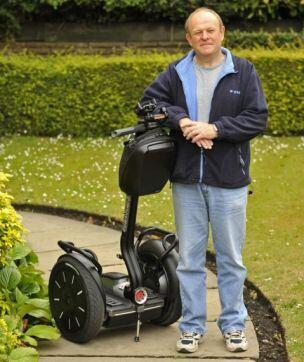
Pada 26 September 2010, James Heselden, pemilik perusahaan Inggris Hesco Bastion, perusahaan yang memproduksi Segway, meninggal akibat mengendarai kendaraan roda dua itu. Menurut saksi mata, pria berusia 62 tahun itu terjatuh dari Segway dan tergelincir ke dalam jurang berkedalaman 30 kaki, hingga akhirnya jasad dan Segway-nya ditemukan di sungai, di dekat kediamannya di West Yorkshire, Inggris.
Ironisnya, kecelakaan tragis ini cuma selang sehari sebelum pengumuman sebuah riset yang mengungkapkan peningkatan angka kasus cidera akibat kecelakaan Segway, yang mayoritas korbannya adalah para pengendara Segway baru yang belum berpengalaman.
Spoiler for buka:

Pada 26 September 2010, James Heselden, pemilik perusahaan Inggris Hesco Bastion, perusahaan yang memproduksi Segway, meninggal akibat mengendarai kendaraan roda dua itu. Menurut saksi mata, pria berusia 62 tahun itu terjatuh dari Segway dan tergelincir ke dalam jurang berkedalaman 30 kaki, hingga akhirnya jasad dan Segway-nya ditemukan di sungai, di dekat kediamannya di West Yorkshire, Inggris.
Ironisnya, kecelakaan tragis ini cuma selang sehari sebelum pengumuman sebuah riset yang mengungkapkan peningkatan angka kasus cidera akibat kecelakaan Segway, yang mayoritas korbannya adalah para pengendara Segway baru yang belum berpengalaman.
Quote:
2. Harry Houdini
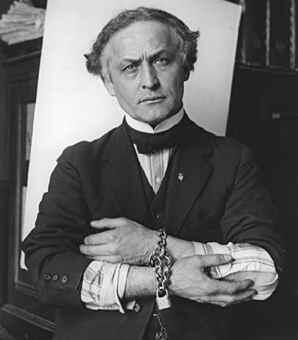
Siapa tak kenal dengan pesulap kondang ini. Harry Houdini, bukanlah pesulap yang menggunakan metoda tradisional. Ia terkenal dengan berbagai trik jenius yang ia ciptakan. Namun, ternyata Houdini meninggal akibat penyakit usus buntu gara-gara memamerkan trik fisik kepada penggemarnya.
Sebelum memulai sebuah pertunjukan, dikabarkan dua orang mahasiswa meminta Houdini untuk memperagakan trik kekuatan fisik, yakni menyerap pukulan-pukulan yang dilayangkan pada tubuh bagian atasnya tanpa terluka.
Karena menuruti permintaan itu, penyakit usus buntu yang telah diidap Houdini makin meradang dan bertambah parah. Pada 31 Oktober 1926, Houdini yang saat itu berusia 52 tahun, meninggal akibat operasi usus buntunya gagal. Houdini dikubur dibaringkan pada kotak tempat ia biasanya mempertontonkan trik ilusi terkenalnya: “buried alive (dikubur hidup-hidup)”.
Spoiler for bk:

Siapa tak kenal dengan pesulap kondang ini. Harry Houdini, bukanlah pesulap yang menggunakan metoda tradisional. Ia terkenal dengan berbagai trik jenius yang ia ciptakan. Namun, ternyata Houdini meninggal akibat penyakit usus buntu gara-gara memamerkan trik fisik kepada penggemarnya.
Sebelum memulai sebuah pertunjukan, dikabarkan dua orang mahasiswa meminta Houdini untuk memperagakan trik kekuatan fisik, yakni menyerap pukulan-pukulan yang dilayangkan pada tubuh bagian atasnya tanpa terluka.
Karena menuruti permintaan itu, penyakit usus buntu yang telah diidap Houdini makin meradang dan bertambah parah. Pada 31 Oktober 1926, Houdini yang saat itu berusia 52 tahun, meninggal akibat operasi usus buntunya gagal. Houdini dikubur dibaringkan pada kotak tempat ia biasanya mempertontonkan trik ilusi terkenalnya: “buried alive (dikubur hidup-hidup)”.
Quote:
3. Marie Curie
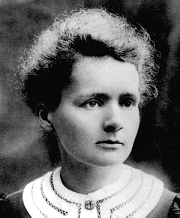
Berkat penemuannya, Marie Curie menjadi wanita pemenang penghargaan Nobel pertama sekaligus menjadi orang pertama yang memenangkan dua penghargaan Nobel sekaligus. Namun, Curie juga merupakan korban dari penemuan dan eksperimennya sendiri: unsur radioaktif. Marie menemukan dua unsur radioaktif radium dan polonium. Ia giat sekali menggunakan radon, gas yang dihasilkan oleh unsur radium, untuk penyembuhan penyakit bagi para serdadu yang terluka pada perang dunia pertama.
Belakangan, baru diketahui bahwa radon memiliki sisi yang mematikan. Setelah sekian lama berinteraksi dengan unsur mematikan itu, perlahan kesehatannya terus menurun. Akhirnya Curie meninggak pada 4 Juli 1934, di usia ke-66 tahun.
Ia meninggal akibat anemia aplastic, sebuah kondisi di mana sumsum tulang tidak lagi memproduksi sel darah yang baru. Hari ini dunia medis mencatatnya sebagai akibat dari paparan radiasi.
Spoiler for buka:

Berkat penemuannya, Marie Curie menjadi wanita pemenang penghargaan Nobel pertama sekaligus menjadi orang pertama yang memenangkan dua penghargaan Nobel sekaligus. Namun, Curie juga merupakan korban dari penemuan dan eksperimennya sendiri: unsur radioaktif. Marie menemukan dua unsur radioaktif radium dan polonium. Ia giat sekali menggunakan radon, gas yang dihasilkan oleh unsur radium, untuk penyembuhan penyakit bagi para serdadu yang terluka pada perang dunia pertama.
Belakangan, baru diketahui bahwa radon memiliki sisi yang mematikan. Setelah sekian lama berinteraksi dengan unsur mematikan itu, perlahan kesehatannya terus menurun. Akhirnya Curie meninggak pada 4 Juli 1934, di usia ke-66 tahun.
Ia meninggal akibat anemia aplastic, sebuah kondisi di mana sumsum tulang tidak lagi memproduksi sel darah yang baru. Hari ini dunia medis mencatatnya sebagai akibat dari paparan radiasi.
Quote:
4. Thomas Andrews
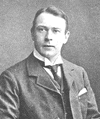
Thomas Andrews adalah salah seorang arsitek kapal Titanic, asal Irlandia yang saat itu berusia 39 tahun. Sebagai seorang pembuat kapal yang bertugas mengawal kapal besutannya, Andrews turut dalam perjalanan perdana Titanic.
Pada 15 April 1912, akhirnya, sampai akhir hayatnya, Thomas pun ‘mengiringi’ ajal kapal besar itu bersama para penumpang lainnya.
Spoiler for buka:

Thomas Andrews adalah salah seorang arsitek kapal Titanic, asal Irlandia yang saat itu berusia 39 tahun. Sebagai seorang pembuat kapal yang bertugas mengawal kapal besutannya, Andrews turut dalam perjalanan perdana Titanic.
Pada 15 April 1912, akhirnya, sampai akhir hayatnya, Thomas pun ‘mengiringi’ ajal kapal besar itu bersama para penumpang lainnya.
Quote:
5. Horace Lawson Hunley
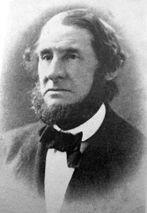
Hunley adalah seorang legislator, pengacara, sekaligus insinyur marinirbagi tentara konfederasi AS. Dan penemuan terkenalnya adalah: kapal selam, yang digunakan pada perang saudara Amerika Serikat.
Namun, saat itu penemuan Hunley memang belum memiliki standar pengamanan yang cukup bagi manusia. Lima dari sembilan anak buah kapal selam saat itu, meninggal pada misi penyelaman perdana.
Pada 15 Oktober 1863, Hunley sendiri pada akhirnya turut ambil bagian pada ujicoba kedua, yakni dengan misi penyerangan terhadap pemblokiran kelompok Union di Charleston Harbour. Pada ujicoba kedua ini, semua kru kapal selam termasuk Hunley yang saat itu berusia 40 tahun, meninggal.
Tentara-tentara konfederasi berhasil mengambil bangkai kapal selam dan memperbaiki kapal selam ini. Pada ujicoba ketiga, akhirnya kapal selam berhasil menenggelamkan sebuah kapal milik Union. Sayangnya, keberhasilan itu tak dapat dirayakan oleh para kru, mengingat pada akhirnya kapal selam itu tiba-tiba tenggelam bersama seluruh krunya. Setelah hilang selama 132 tahun, akhirnya jenazah Hunley ditemukan di dasar Samudra Atlantik, di dekat Charleston Harbour.
Spoiler for buka:

Hunley adalah seorang legislator, pengacara, sekaligus insinyur marinirbagi tentara konfederasi AS. Dan penemuan terkenalnya adalah: kapal selam, yang digunakan pada perang saudara Amerika Serikat.
Namun, saat itu penemuan Hunley memang belum memiliki standar pengamanan yang cukup bagi manusia. Lima dari sembilan anak buah kapal selam saat itu, meninggal pada misi penyelaman perdana.
Pada 15 Oktober 1863, Hunley sendiri pada akhirnya turut ambil bagian pada ujicoba kedua, yakni dengan misi penyerangan terhadap pemblokiran kelompok Union di Charleston Harbour. Pada ujicoba kedua ini, semua kru kapal selam termasuk Hunley yang saat itu berusia 40 tahun, meninggal.
Tentara-tentara konfederasi berhasil mengambil bangkai kapal selam dan memperbaiki kapal selam ini. Pada ujicoba ketiga, akhirnya kapal selam berhasil menenggelamkan sebuah kapal milik Union. Sayangnya, keberhasilan itu tak dapat dirayakan oleh para kru, mengingat pada akhirnya kapal selam itu tiba-tiba tenggelam bersama seluruh krunya. Setelah hilang selama 132 tahun, akhirnya jenazah Hunley ditemukan di dasar Samudra Atlantik, di dekat Charleston Harbour.
Quote:
6. Alexander Bogdanov
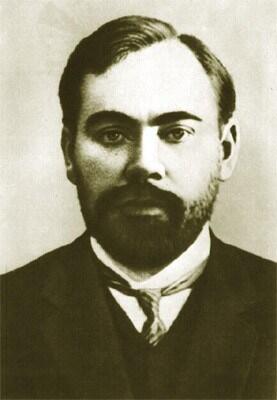
Tak banyak yang mengenal nama ini. Namun, temuannya sangat penting bagi dunia kedokteran: transfusi darah. Bogdanov, yang juga seorang ekonom, profesor, dokter, dan pendiri Bolshevisme, mencoba untuk menyediakan transfusi darah secara terus menerus.
Pada 1928, Bogdanov berhasil mengujikan alat transfusi ini pada dirinya hingga 11 kantung. Namun, yang ke 12 ternyata fatal, Bogdanov kemudian meninggal. Para peneliti terbelah mengenai penyebab meninggalnya ilmuwan 55 tahun itu. Ada yang mengatakan ia terkena penyakit infeksi darah, inkompatibitas jenis darah, atau bahkan bunuh diri.
Spoiler for buka:

Tak banyak yang mengenal nama ini. Namun, temuannya sangat penting bagi dunia kedokteran: transfusi darah. Bogdanov, yang juga seorang ekonom, profesor, dokter, dan pendiri Bolshevisme, mencoba untuk menyediakan transfusi darah secara terus menerus.
Pada 1928, Bogdanov berhasil mengujikan alat transfusi ini pada dirinya hingga 11 kantung. Namun, yang ke 12 ternyata fatal, Bogdanov kemudian meninggal. Para peneliti terbelah mengenai penyebab meninggalnya ilmuwan 55 tahun itu. Ada yang mengatakan ia terkena penyakit infeksi darah, inkompatibitas jenis darah, atau bahkan bunuh diri.
Quote:
7. William Bullock
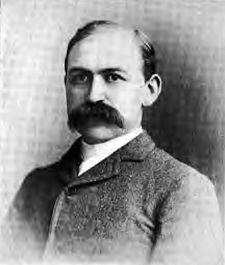
William Bullock adalah pria kelahiran New York, tahun 1813, yang menemukan alat press cetak putar. Alat ini bekerja mengepres dengan memutar rol kertas secara kontinyu.
Kisah legenda yang berkembang, kemudian menyebutkan Bullock secara tak sengaja tubuhnya tertarik oleh putaran mesin. Kakinya luka oleh mesin ini. Belakangan pria yang saat itu berusia 54 tahun itu, mengalami infeksi dan tak lama kemudian ia meninggal dengan kakinya yang telah membusuk.
Spoiler for buka:

William Bullock adalah pria kelahiran New York, tahun 1813, yang menemukan alat press cetak putar. Alat ini bekerja mengepres dengan memutar rol kertas secara kontinyu.
Kisah legenda yang berkembang, kemudian menyebutkan Bullock secara tak sengaja tubuhnya tertarik oleh putaran mesin. Kakinya luka oleh mesin ini. Belakangan pria yang saat itu berusia 54 tahun itu, mengalami infeksi dan tak lama kemudian ia meninggal dengan kakinya yang telah membusuk.
Quote:
Original Posted By chomolungma ►
Franz Reichelt
In the late 1700s, a Frenchman known as Joseph Montgolfier began throwing himself off the roof of his house and out of gondolas attached to hot air balloons he had invented. Of course, he didn't take these leaps unencumbered; attached to him were various parachute prototypes that helped break his fall.
Around the same time, another Frenchman named Louis-Sebastian Lenormand jumped from the top of the Montpelier Observatory in Paris, also demonstrating the success of a parachute-like device. And in 1804, a third Frenchman named Bourget successfully demonstrated the use of a collapsible parachute in a jump in Germany.
Nearly 100 years later, after the parachute's design had been more refined, another Frenchman became fascinated with them. His name was Franz Reichelt and he was a tailor by trade who had a bit of inventor in him -- unfortunately.
In 1912, Reichelt climbed to the top of the Eiffel Tower to -- as he told authorities -- throw off a dummy strapped to a "flying suit." But it appears Reichelt's plan all along was to use himself in the experiment. It proved a lethal mistake for the "Flying Tailor," as the suit did absolutely nothing to break his 190-foot (57.9-meter) fall from what was at the time the world's tallest structure.
It turns out that Reichelt was a better tailor than inventor, as he seemed to take no inspiration from the various parachute designs that had come before his "flying suit." In fact, just one year before his death, an American named Grant Morton gained the distinction of being the first man to jump out of an airplane wearing a parachute that did, in fact, work.
Henry Winstanley
In 1698, on the coast of England, Henry Winstanley lit 50 candles at the top of his invention: the Eddystone Lighthouse, the first lighthouse to ever be built on rock. Five years later, in what has become known as the "Great Storm," the lighthouse collapsed and killed him while he was making repairs to the structure.
Michael Dacre
We've all seen them in movies: small rocket-like cars that ferry passengers through the air in the cities of the future. But, had it gone according to plan for an inventor named Michael Dacre, those flights of the future might already have existed today.
Dacre, born in the U.K. in 1956, joined the British army in 1975, eventually becoming a pilot who flew planes like the Gazelle, Lynx and Beaver in tours at home and abroad in Germany, the Falkland Islands and Canada. After leaving the service, he started his own flight crewing service and later formed a company known as Avcen Ltd.
It is with Avcen that he developed a craft he called the Jetpod. The Jetpod looked like a small airplane, ran quietly and was designed to need only 125 meters (410.1 feet) to take off and 300 meters (984.3 feet) to land, a concept he called VQSTOL (very quiet short take-off and landing). With such a craft, Dacre contended, runways could be built inside urban areas, making transport from airports to city centers much quicker, thereby eliminating congested highways. For example, it was predicted that the plane (which had a maximum speed of 350 mph or 563.3 km/h) could make it from Heathrow airport in the U.K. to central London in about four minutes and cost approximately 50 GBP.
Avcen had planned to build three different models of the Jetpod. The T-100 was a commuter plane, with ultra-light seats, designed to do as many as 50 trips per day from airports to center cities. The M-300 was a heavier plane that would be used in military applications to move battlefield casualties to nearby medical facilities. The E-400 was also a medical transport vehicle, but the idea was that it would be used for civilian applications and could land on a cleared road near a hospital.
Unfortunately, Dacre never got to see these planes reach production. On Aug. 16, 2009, Dacre took an eight-seater Jetpod prototype to a take-off strip north of Kuala Lumpur, Malaysia, for a test flight. After failing to get airborne three times, on the fourth attempt the craft shot vertically into the sky before falling back to Earth and killing the man who had created it -- along with his plans for a "flying taxi."
Li Si
In 221 B.C., China was converted from a chaotic jumble of warring states into a unified country by the ruling Qin Dynasty. In accomplishing this goal, the politicians of the time used the doctrine of Legalism -- a system of rewards and punishments meted out through the halls of government and on the streets where its citizens lived.
One of the most important figures involved in the expansion of the Qin Dynasty is Li Si, a man born to a family of commoners in circa 280 B.C. and one who rose from a simple clerk in his local government to one of the most influential men in the imperial court.
Li Si was a smooth-talking political operative who found favor with Zheng, the King of Qin and its first emperor. He coaxed the king into accepting many dubious policies of his, such as bribing enemies who could be bought and assassinating those who couldn't; tricking neighboring states into subjugation through outright lies; and collecting and burning all books except those regarding medicine, divination and agriculture.
Li Si was well-liked by the king, as evidenced by his appointment to chancellor sometime between 219 and 213 B.C., which made him one of the two highest-ranking subjects in the empire.
Although the burning of books is the act Li Si is most remembered for by Chinese scholars, it's another of his ideas that has captured the popular imagination: his invention of The Five Pains. In this method of torture and execution, a criminal would have first his nose cut off, then a hand and a foot. These were followed by castration and finally death by being cut in half.
Perhaps in an example of "instant Karma," Li Si was himself subjected to the cruelties of his own invention in 208 B.C., when he was convicted of treason and executed via The Five Pains.
Franz Reichelt
In the late 1700s, a Frenchman known as Joseph Montgolfier began throwing himself off the roof of his house and out of gondolas attached to hot air balloons he had invented. Of course, he didn't take these leaps unencumbered; attached to him were various parachute prototypes that helped break his fall.
Around the same time, another Frenchman named Louis-Sebastian Lenormand jumped from the top of the Montpelier Observatory in Paris, also demonstrating the success of a parachute-like device. And in 1804, a third Frenchman named Bourget successfully demonstrated the use of a collapsible parachute in a jump in Germany.
Nearly 100 years later, after the parachute's design had been more refined, another Frenchman became fascinated with them. His name was Franz Reichelt and he was a tailor by trade who had a bit of inventor in him -- unfortunately.
In 1912, Reichelt climbed to the top of the Eiffel Tower to -- as he told authorities -- throw off a dummy strapped to a "flying suit." But it appears Reichelt's plan all along was to use himself in the experiment. It proved a lethal mistake for the "Flying Tailor," as the suit did absolutely nothing to break his 190-foot (57.9-meter) fall from what was at the time the world's tallest structure.
It turns out that Reichelt was a better tailor than inventor, as he seemed to take no inspiration from the various parachute designs that had come before his "flying suit." In fact, just one year before his death, an American named Grant Morton gained the distinction of being the first man to jump out of an airplane wearing a parachute that did, in fact, work.
Henry Winstanley
In 1698, on the coast of England, Henry Winstanley lit 50 candles at the top of his invention: the Eddystone Lighthouse, the first lighthouse to ever be built on rock. Five years later, in what has become known as the "Great Storm," the lighthouse collapsed and killed him while he was making repairs to the structure.
Michael Dacre
We've all seen them in movies: small rocket-like cars that ferry passengers through the air in the cities of the future. But, had it gone according to plan for an inventor named Michael Dacre, those flights of the future might already have existed today.
Dacre, born in the U.K. in 1956, joined the British army in 1975, eventually becoming a pilot who flew planes like the Gazelle, Lynx and Beaver in tours at home and abroad in Germany, the Falkland Islands and Canada. After leaving the service, he started his own flight crewing service and later formed a company known as Avcen Ltd.
It is with Avcen that he developed a craft he called the Jetpod. The Jetpod looked like a small airplane, ran quietly and was designed to need only 125 meters (410.1 feet) to take off and 300 meters (984.3 feet) to land, a concept he called VQSTOL (very quiet short take-off and landing). With such a craft, Dacre contended, runways could be built inside urban areas, making transport from airports to city centers much quicker, thereby eliminating congested highways. For example, it was predicted that the plane (which had a maximum speed of 350 mph or 563.3 km/h) could make it from Heathrow airport in the U.K. to central London in about four minutes and cost approximately 50 GBP.
Avcen had planned to build three different models of the Jetpod. The T-100 was a commuter plane, with ultra-light seats, designed to do as many as 50 trips per day from airports to center cities. The M-300 was a heavier plane that would be used in military applications to move battlefield casualties to nearby medical facilities. The E-400 was also a medical transport vehicle, but the idea was that it would be used for civilian applications and could land on a cleared road near a hospital.
Unfortunately, Dacre never got to see these planes reach production. On Aug. 16, 2009, Dacre took an eight-seater Jetpod prototype to a take-off strip north of Kuala Lumpur, Malaysia, for a test flight. After failing to get airborne three times, on the fourth attempt the craft shot vertically into the sky before falling back to Earth and killing the man who had created it -- along with his plans for a "flying taxi."
Li Si
In 221 B.C., China was converted from a chaotic jumble of warring states into a unified country by the ruling Qin Dynasty. In accomplishing this goal, the politicians of the time used the doctrine of Legalism -- a system of rewards and punishments meted out through the halls of government and on the streets where its citizens lived.
One of the most important figures involved in the expansion of the Qin Dynasty is Li Si, a man born to a family of commoners in circa 280 B.C. and one who rose from a simple clerk in his local government to one of the most influential men in the imperial court.
Li Si was a smooth-talking political operative who found favor with Zheng, the King of Qin and its first emperor. He coaxed the king into accepting many dubious policies of his, such as bribing enemies who could be bought and assassinating those who couldn't; tricking neighboring states into subjugation through outright lies; and collecting and burning all books except those regarding medicine, divination and agriculture.
Li Si was well-liked by the king, as evidenced by his appointment to chancellor sometime between 219 and 213 B.C., which made him one of the two highest-ranking subjects in the empire.
Although the burning of books is the act Li Si is most remembered for by Chinese scholars, it's another of his ideas that has captured the popular imagination: his invention of The Five Pains. In this method of torture and execution, a criminal would have first his nose cut off, then a hand and a foot. These were followed by castration and finally death by being cut in half.
Perhaps in an example of "instant Karma," Li Si was himself subjected to the cruelties of his own invention in 208 B.C., when he was convicted of treason and executed via The Five Pains.
pejwan nih
Quote:
Original Posted By wrist
Nice info semoga jd HT
Nice info semoga jd HT
Quote:
Original Posted By mr.radrich ►
houdini ane pernah liat detik-detik kematian nya gan
ngeri juga
houdini ane pernah liat detik-detik kematian nya gan
ngeri juga
Quote:
Original Posted By kambingg.hitam ►
lebih tepatnya disebut dengan senjata makan tuan ya gan, mati karena hasil karyanya sendiri, mungkin empu gandring juga termasuk gan
lebih tepatnya disebut dengan senjata makan tuan ya gan, mati karena hasil karyanya sendiri, mungkin empu gandring juga termasuk gan
Diubah oleh hanifaiz 14-09-2014 10:08
0
6.3K
Kutip
55
Balasan
Komentar yang asik ya
Urutan
Terbaru
Terlama
Komentar yang asik ya
Komunitas Pilihan